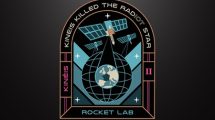
Over the coming year, it will be more important than ever for the industry to step up to increased competition and allow constant connectivity while ensuring consistent quality for all applications.
Below are a few industry trends, moving forward.
Satellite will continue to have relevance in a wide range of industry sectors
Over recent years, many pundits have hailed the death of satellite, citing the rise of other types of connections while the industry is facing stiff competition and super-fast broadband rollouts are giving consumers access to fibre-to-home in many parts of the world. However, satellite still has an important part to play across a range of sectors.
Take broadband, for example.
In the UK, the government quite happily says 90% of the country has super-fast broadband, but it neglects to acknowledge that is only 35% of the geography of the country. In its latest report, Ofcom even states a widening gap between rural and urban homes and businesses. This is true in almost every country, with rural homes and businesses suffering from a lack of broadband provision. As broadband speeds elsewhere continue to increase, it is making it harder than ever for rural businesses to compete. Satellite has a really important role to play here, but the biggest challenge for the industry is going to be changing consumer perceptions so that satellite is no longer considered the last resort, but a viable alternative to other broadband connections.
In other sectors, the role of satellite is already well established and will continue to be important. For example, in the maritime and oil & gas industries, satellite really is the only option. The broadcast industry is the one where there is a great deal more uncertainty, especially since over-the-top (OTT) services have turned the entire industry upside down. However, satellite continues to be valuable for both linear services and providing the connections for OTT services. While there are a number of experiments into IP news gathering, satellite will also remain important for capturing feeds from the field for the foreseeable future. However, I believe we will see more integration between satellite and IP.
New consumer technology will drive further adoption of satellite
Technology is developing at an astounding rate, with a sharp rise in consumer expectations. What many people, particularly outside the industry, don’t consider is that satellite is a key enabler for many of these advancements. This year, I expect two technologies in particular to drive further adoption of satellite: Internet of Things (IoT) and 5G.
IoT has been slowly gaining traction, with smart devices able to switch the lights off, adjust your heating, tell you what the weather is doing and – perhaps less importantly – tell you jokes! Up until now, these have mainly been gimmicks, designed to do something cool just because they can. I predict that over the coming year, these will get more clever, with providers increasingly considering how IoT can actually serve a useful purpose. Key to that will be integration across various applications.
For example, when you switch on a film, perhaps the living room lights will dim automatically. The main challenge for IoT right now is the privacy concerns, but as the devices get more useful and these concerns are addressed, I believe there will be a sharp uptake in their use. These data-hungry applications mostly rely on satellite capacity to be delivered.
The other big topic in this area right now is the provision of 5G. There is once again a huge debate over frequency assignments, and it is clear that the mobile industry needs satellite spectrum to be able to deliver 5G. Indeed, the Radio Frequency Spectrum Policy Group, a high-level advisory group that assists the European Commission in the development of radio spectrum policy, has identified a role for satellite in the rollout of 5G services for vehicles on the move and in remote rural areas, M2M, cellular backhaul and fixed broadband.
There will be increased pressure, more launches, and increased interference
This increasing pressure for everything, everywhere, anywhere is already affecting the satellite industry. This heralds the appearance of a huge volume of new LEO constellations, aimed at better serving these new markets.
Indeed, the march of new LEO constellations continues, with some 9,000 satellites planned for launch in the next five years. History shows that the best laid plans can be defeated by over-complicated use of technology or failure to meet projected market share when established players in the target market change tactics to combat their new competitors.
With 640 satellites currently in LEO, we face an increase of 1,500% in LEO hardware, with some doubt whether it will successfully add value. If it does, then we will benefit from enhanced services. If it doesn’t, then we will be faced with the cost of maintaining satellites for their orbital lifetime (10 to 17 years), a commitment that is hard to justify in the prevailing financial climate. Whether they are sustainable or not, we are going to have to live with 9,000 LEO satellites in the space debris band between Earth and GEO satellites.
That will have an impact both on other LEO satellites and on those GEO satellites, which will find themselves masked by a very congested space below. This in turn will lead to errors and interference, causing much-feared downtime. Also, the more pressure to provide more services and the more competition in the satellite market, the higher the risk of errors. Unfortunately, I very much expect an increase in interference unless measures aren’t taken. Thankfully, some are already underway, in part through the work done by the Satellite Interference Reduction Group in providing a discussion forum and harvesting new technology to help.
With LEO between 20 and 200 miles altitude and GEO at 22,300 miles, the interaction between LEO and GEO satellites viewed from a downlink perspective gives an impression of minimal masking of Earth coverage when a GEO is eclipsed by a LEO satellite.
On the other hand, a LEO satellite of 1m diameter will eclipse between 3.5% and 23.4% of a GEO orbital slot (depending on LEO altitude). This assumes GEO at +/-3 degrees inclination. While it can be argued that this is only between 0.58% and 0.59% of the overall Clarke orbit (between +/-3 degree limits), the impact of eclipse must be considered on a per location basis. Increasing the diameter of satellites in this analysis increases the eclipsed area of the Clarke orbit.
Regulators will face pressure to come up-to-date
As an industry that started in 1963, it is surprising how few standards have been updated. The LEO constellations about to be launched are a good case in point. There has been very little consideration by the regulators on how this many LEO satellites will impact the GEO arc. With so much having changed since the start of satellite, regulators will need to wake up to this and begin to bring in standards suited to the modern age of satellite communications.
However, sometimes they get those horribly wrong. For example, at last week’s Satellite Consultative Committee (SCC) meeting, OFCOM tabled a proposal to charge for satellite filing. This is not currently a recovered cost, but OFCOM spends approximately $1.59 million per year on satellite filings, doing 10 per year. In the next five years, they are going to have to gear up to complete up to 1,600 filings a year. This equates to costs in the region of $265 million per year which will have to be recovered.
This is naturally greatly concerning for all operators, especially as the traditional approach of consultation before action will take us up to 2019, by which time the new LEO constellations will be ready for launch. The operators of these satellites need to know what costs they will face as part of their financial planning cycle and whether the costs should be per constellation or per satellite. On the basis of the above numbers, if all 9,000 satellites are filed by OFCOM, each will require a budget of $29,455. This equates to $21.2 million for a 720-satellite constellation.
Aside from that, the SCC has advised UK stakeholders that ITU-R WP4 is developing new software to assess adjacent satellite interference (ASI) as well as interaction between GEO and LEO satellites. This will move away from the current coordination practices (one to one) and hopefully take both directions of transmission into account – currently, the only accumulative assessment is against downlink power flux density.
Working on downlink power alone assumes that we are dealing with TVRO satellites, whereas we are dealing with a growing community of duplex communications satellites. Where the probability of masking of GEO through LEO eclipse used to be likened to searching for a needle in a haystack, with the increasing number of LEO satellites the needle will soon be significantly larger and easier to find!
Satellite will come out on top, but only if the industry fights for it
It is clear that there is a lot of opportunity for the satellite industry right now, with a great deal of existing applications relying on it and many emerging applications where satellite will play a crucial role. At the same time, however, challenges lie ahead, many a result of success. As an industry, we need to carefully consider the impact of new technologies and pressures, then put in place the right standards and regulations, and the right tools and technology. Otherwise, we will simply not be able to keep the right level of consistent service and quality for our customers, and we will be our own undoing.
Those discussions are happening, and I believe we will see many more tools launch over the coming 12 months, to help satellite live on.












Add Comment